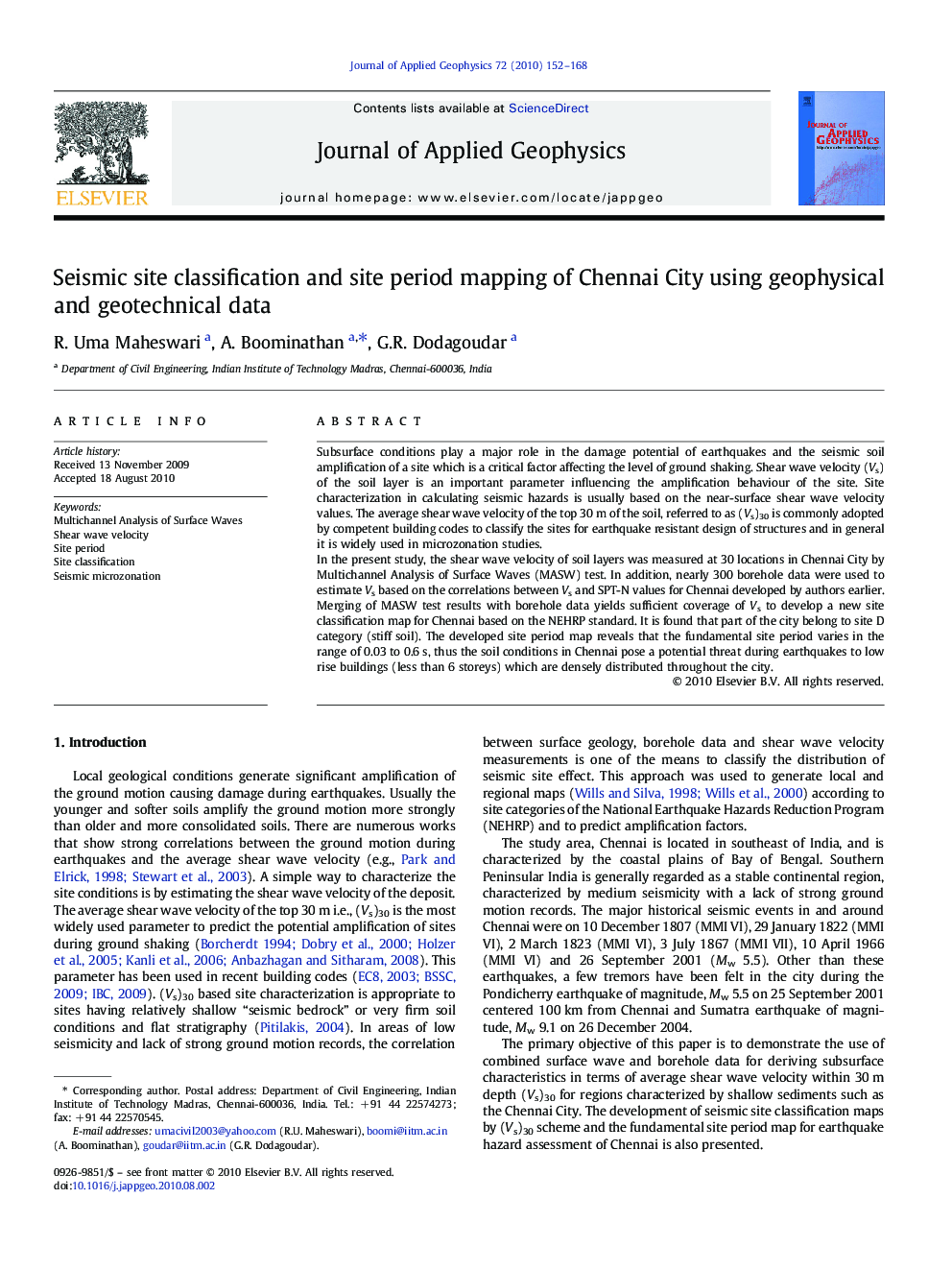| کد مقاله | کد نشریه | سال انتشار | مقاله انگلیسی | نسخه تمام متن |
|---|---|---|---|---|
| 4740850 | 1358611 | 2010 | 17 صفحه PDF | دانلود رایگان |

Subsurface conditions play a major role in the damage potential of earthquakes and the seismic soil amplification of a site which is a critical factor affecting the level of ground shaking. Shear wave velocity (Vs) of the soil layer is an important parameter influencing the amplification behaviour of the site. Site characterization in calculating seismic hazards is usually based on the near-surface shear wave velocity values. The average shear wave velocity of the top 30 m of the soil, referred to as (Vs)30 is commonly adopted by competent building codes to classify the sites for earthquake resistant design of structures and in general it is widely used in microzonation studies.In the present study, the shear wave velocity of soil layers was measured at 30 locations in Chennai City by Multichannel Analysis of Surface Waves (MASW) test. In addition, nearly 300 borehole data were used to estimate Vs based on the correlations between Vs and SPT-N values for Chennai developed by authors earlier. Merging of MASW test results with borehole data yields sufficient coverage of Vs to develop a new site classification map for Chennai based on the NEHRP standard. It is found that part of the city belong to site D category (stiff soil). The developed site period map reveals that the fundamental site period varies in the range of 0.03 to 0.6 s, thus the soil conditions in Chennai pose a potential threat during earthquakes to low rise buildings (less than 6 storeys) which are densely distributed throughout the city.
Research highlights
► MASW tests conducted at 30 locations in the Chennai City reveal that the optimum field parameters to obtain the fundamental mode for a seismic array of 40 to 50 m in a stiff soil site is 10 to 15 m of source offset distance and 1 m geophone spacing.
► The seismic site categorization based on (Vs)30 approach as per the NEHRP guidelines shows three distinct zones in the study area: Zone B (shallow bedrock) in southern most part, Zone C (very dense soil at relatively shallow bedrock) in southern part and Zone D (stiff soil) in all other parts of the city.
► The developed site period map reveals that, the soil conditions at Chennai pose a potential threat during an earthquake scenario to the low rise buildings (less than 6 storeys).
Journal: Journal of Applied Geophysics - Volume 72, Issue 3, November 2010, Pages 152–168